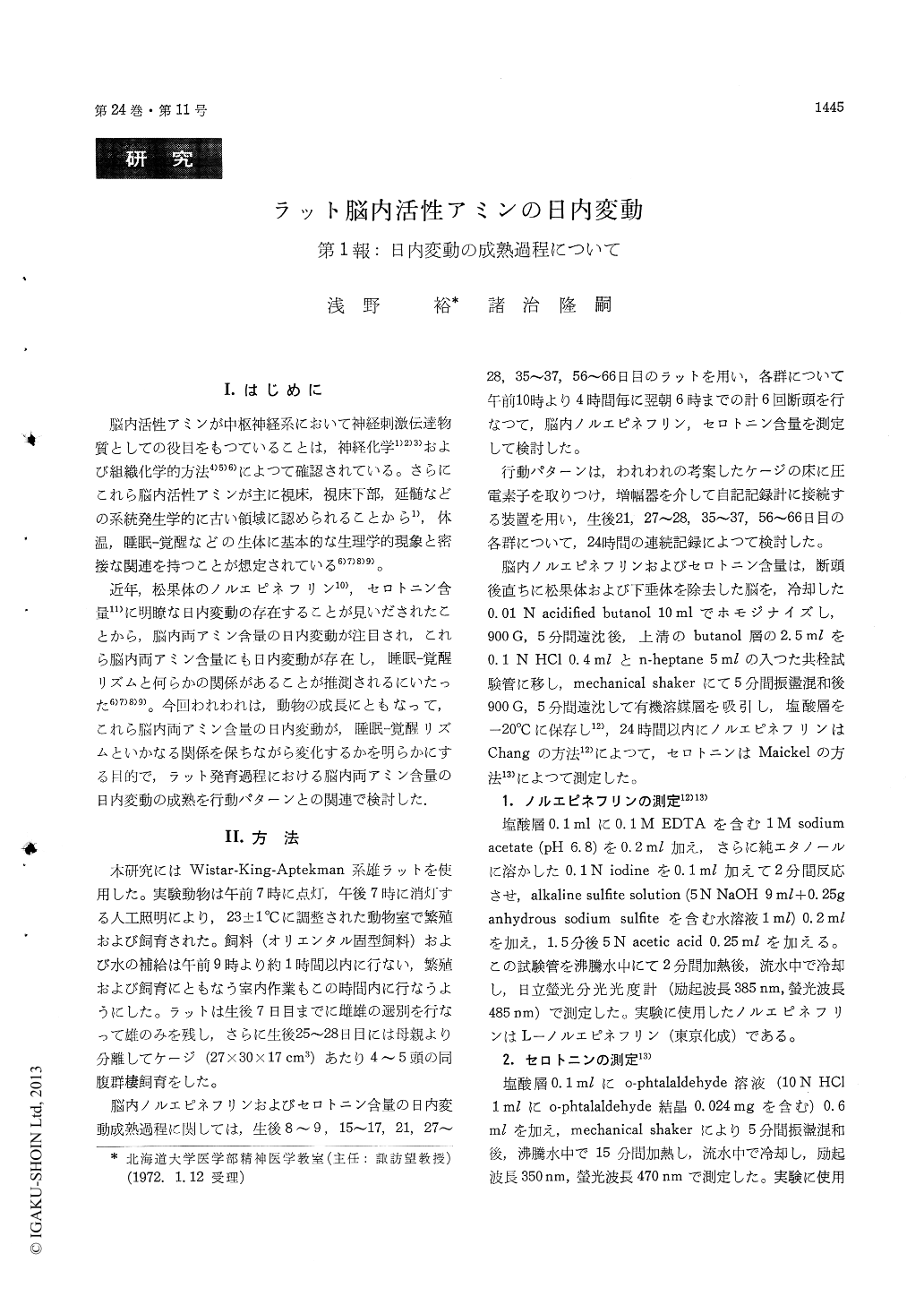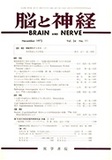Japanese
English
- 有料閲覧
- Abstract 文献概要
- 1ページ目 Look Inside
I.はじめに
脳内活性アミンが中枢神経系において神経刺激伝達物質としての役目をもつていることは,神経化学1)2)3)および組織化学的方法4)5)6)によつて確認されている。さらにこれら脳内活性アミンが主に視床,視床下部,延髄などの系統発生学的に古い領域に認められることから1),体温,睡眠—覚醒などの生体に基本的な生理学的現象と密接な関連を持つことが想定されている6)7)8)9)。
近年,松果体のノルエピネフリン10),セロトニン含量11)に明瞭な日内変動の存在することが見いだされたことから,脳内両アミン含量の日内変動が注目され,これら脳内両アミン含量にも日内変動が存在し,睡眠—覚醒リズムと何らかの関係があることが推測されるにいたった6)7)8)9)。今回われわれは,動物の成長にともなって,これら脳内両アミン含量の日内変動が,睡眠—覚醒リズムといかなる関係を保ちながら変化するかを明らかにする目的で,ラット発育過程における脳内両アミン含量の日内変動の成熟を行動パターンとの関連で検討した.
Changes in the daily rhythm of norepinephrine and serotonin contents in the rat brain were examined for the period ranging from 8-9 to 56-66post-natal days. Both amines showed a common pattern of circadian changes up to day 15-17 exhibiting a peak in the dark and a reduction in the light periods. From day 35-37 on, new and mature forms of circadian rhythm were observed ; norepinephrine demonstrated a peak in the dark and serotonin in the light phases. It was confirmed also that a circadian rhythm of spontaneous motoractivity and accordingly of the sleep-and-wakeful-ness pattern is formed gradually 4 weeks after birth. A hypothesis was suggested that the maturation of the circadian rhythm of brain norepinephrine and serotonin contents is closely related that of spontaneous activity and the sleep-and-wakefulness mechanisms.

Copyright © 1972, Igaku-Shoin Ltd. All rights reserved.


